Vietnamese markets are lively places full of sights, sounds, and smells that reflect the country's culture. There are bustling day markets, enchanting night bazaars, and specialty markets catering to different interests. This article helps you to explore the 7 most typical types of markets in Vietnam and each market’s characteristics.
1. Day market
Vietnamese day markets are the most typical type of markets in Vietnam that you can obstacle them in any city and town. Vietnamese people usually go to the day market once a day or every few days. They are a combination of wet market and dry markets, and typically start early in the morning, around sunrise, and wind down by midday when the sun gets hot. Sometimes, you will see they close for a noon break and open late in the afternoon, which the Vietnamese call it "Chợ chiều".

These markets offer more than just meat, fish, and produce. You'll find a plethora of household items, from cooking utensils and dishes to clothes and toys. You even also find interesting souvenirs or handcrafted items, like lacquerware or embroidery.
Haggling is an essential part of this traditional market experience. Therefore, don't be shy to test your bargaining skills with the vendors in a good-natured way. Mix with the smell of plenty of produce, the market's atmosphere is so vibrant, filled with the calls of vendors, the murmur of conversation, and the sounds of everyday life in Vietnam.
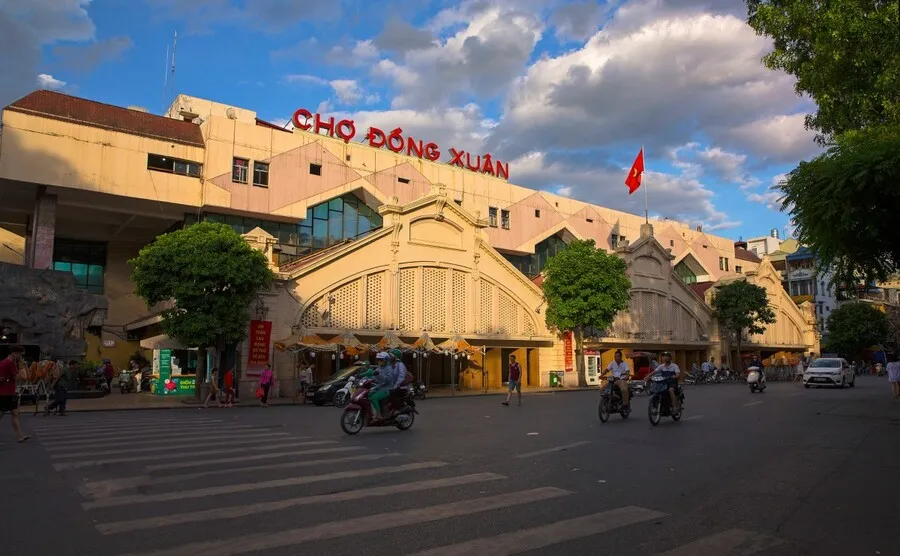
One typical example of a day market is Dong Xuan Market in Hanoi. The market is a bustling hub in Northern Vietnam, known as one of the largest wholesale markets in Vietnam.
The Dong Xuan's first floor is a paradise for food lovers, featuring a wide array of seafood, meats, vegetables, and processed foods. Head up to the second floor, and you'll find yourself in a fashion and souvenir haven. The third floor caters to families with its diverse selection of clothing for newborns, pregnant women, and children. That is not mentioned to the open areas of the market also offers many reasonable shopping options.
2. Night market
Vietnamese night markets are a vibrant and colorful experience. Unlike the day markets, the nighttime bazaars come alive in the evenings, offering visitors a lively shopping and dining time in the cooler air.
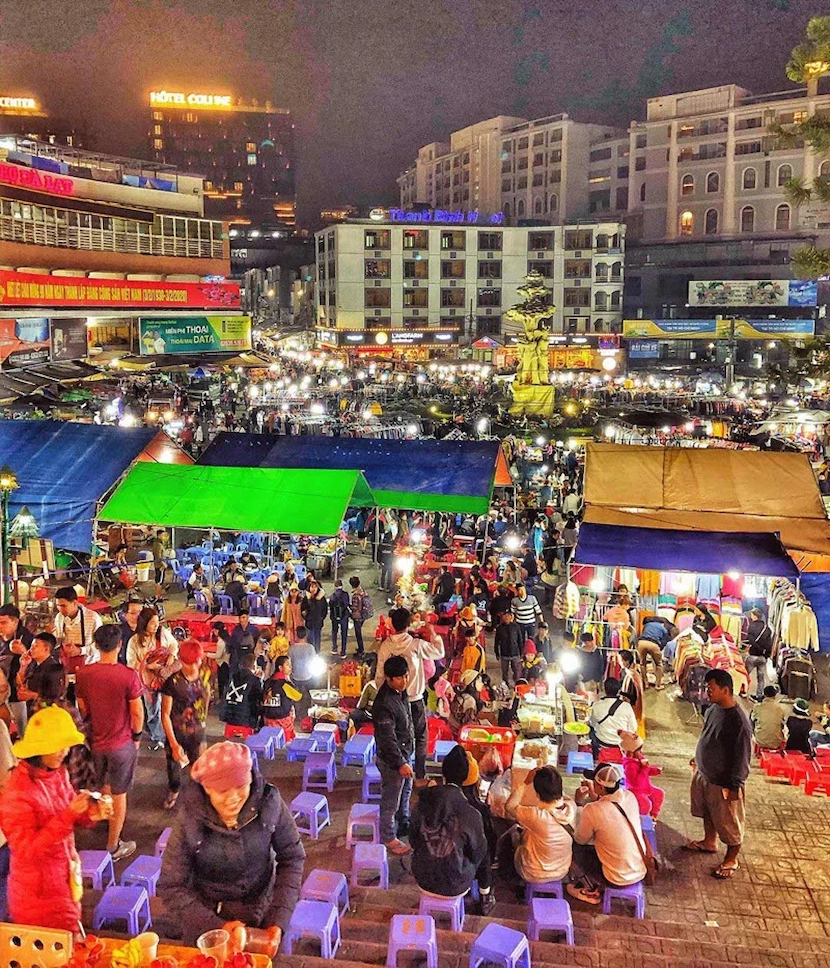
Food is one of the main highlights of Vietnamese night markets. The aroma of sizzling grilled meats, bbq, pie and fresh herbs fills the air, drawing crowds to the rows of street food stalls.
In addition to food, Vietnamese night markets are filled with local handicrafts and souvenirs. Stalls overflow with handmade goods like decorative silk lanterns, ornate lacquerware, embroidered fabrics, traditional paintings, and more.
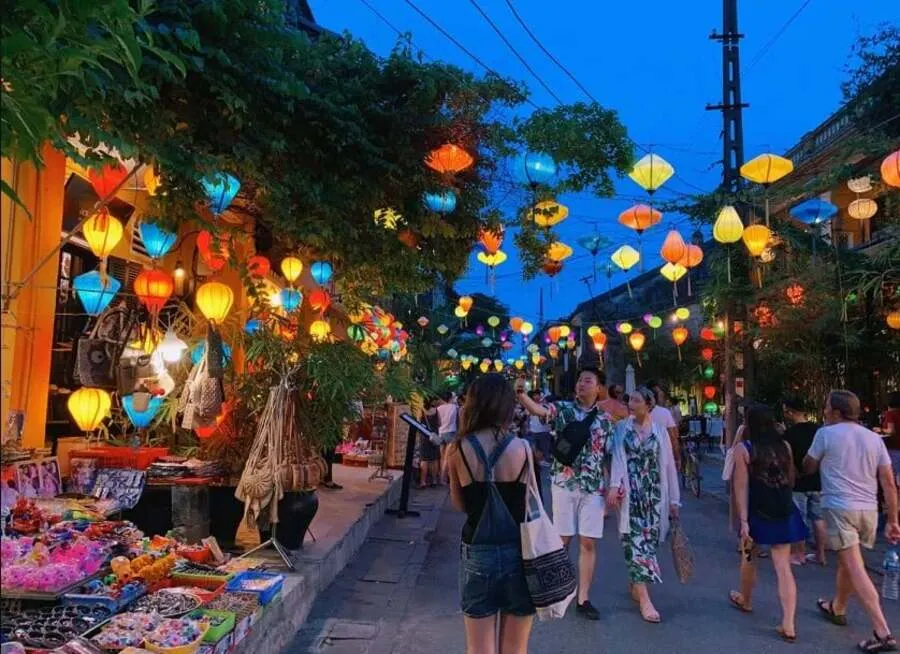
The Hoi An Night Market is a lively and colorful marketplace when the sun sets in this charming Central town in Vietnam. The market is adorned with magic colorful lanterns that draws both locals and tourists alike.
There's a wide variety of items available, such as clothes, shoes, handmade crafts, souvenirs, and accessories. Particularly noteworthy are the two rows of food stalls offering delicious dishes, showcasing the flavors of Hoi An cuisine.
3. Ethnic market
The ethnic market is a unique type of market in Vietnam that mainly serves the needs of local ethnic minority communities. People gather at ethnic markets not only for trade goods as normal day and night markets but also to socialize. For visitors, this is a lively place showcasing different ethnic Vietnamese cultures.
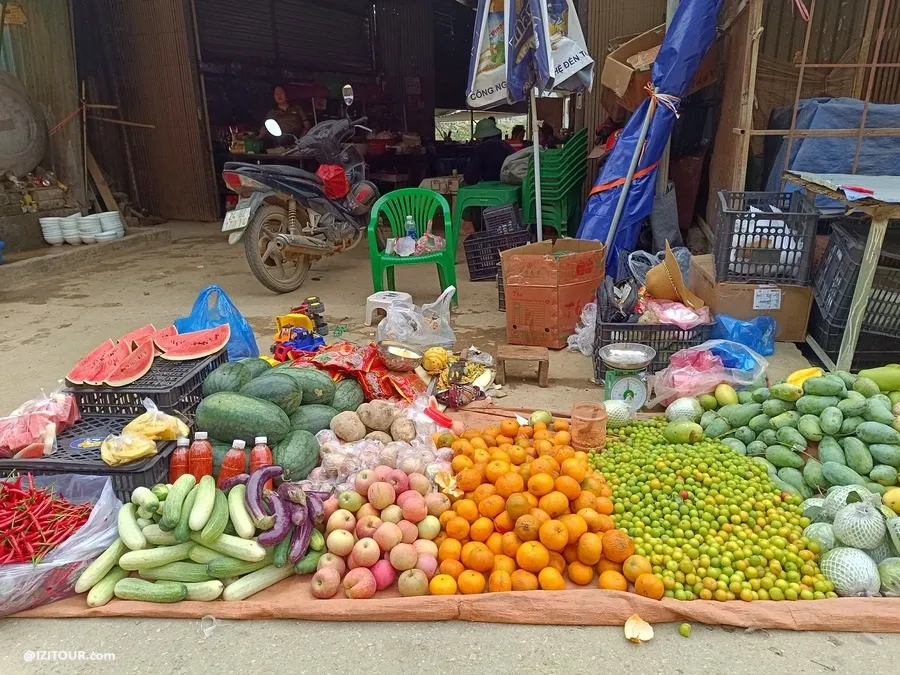
Vietnamese ethnic markets are open on specific days each week, typically on weekends like Saturday and Sunday. Some markets may also open on Thursdays and Fridays. Additionally, there are markets that follow a lunar calendar, opening on days associated with animals such as Tiger, Monkey, Snake, and Pig throughout each month.
The markets start from early morning until late afternoon. Locals sell a lot of goods, food, dishes, from daily items to fresh veggies and essentials.
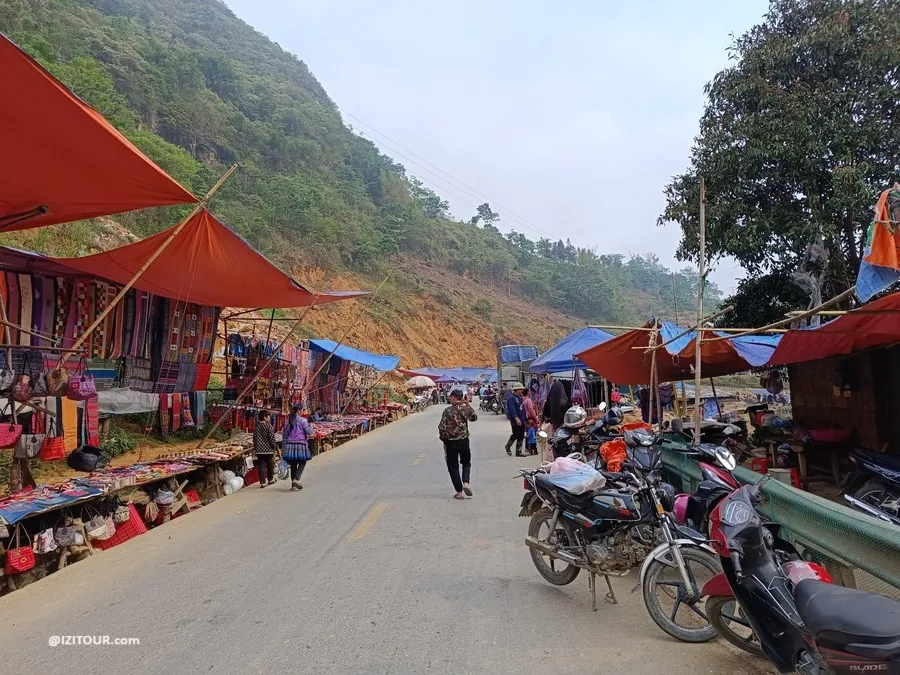
Yet, as revealed, these markets are more than just places of commerce. They serve as hubs for social gatherings and celebrations of traditions. Locals come not only to buy and sell but also to converse, play traditional games, sing, dance, and participate in cultural activities.
One highlight of ethnic market is the vibrant display of handmade ethnic costumes, with the women in ornate headdresses, embroidered tunics, and brightly colored dresses. You can glimpse their craftsmanship as they sew new bags, adjust garments, and embroider fabric with meticulous skill.
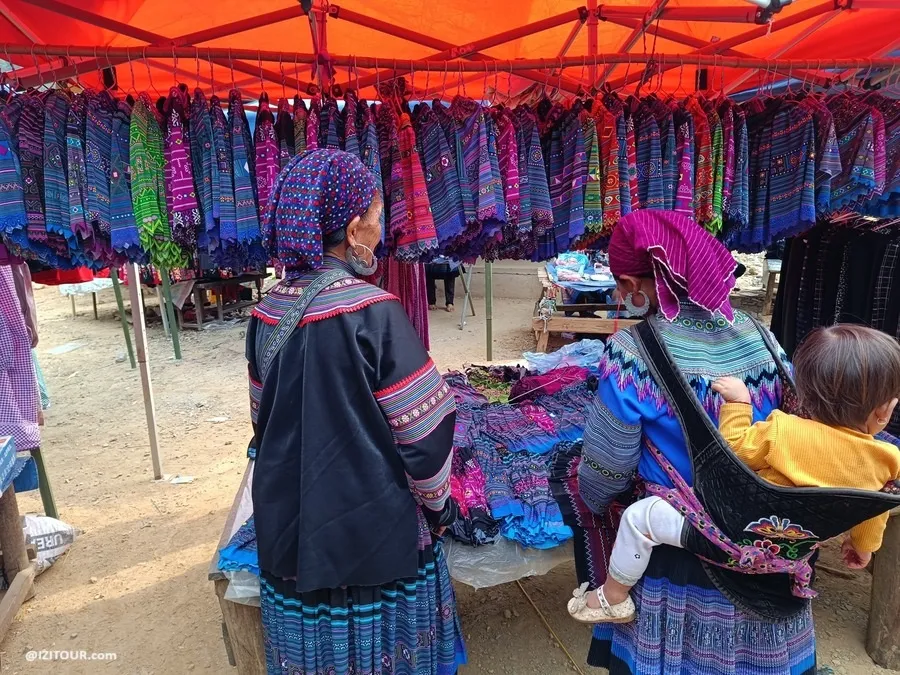
Situated in Bac Ha District within Lao Cai Province in Northern Vietnam, Bac Ha Market has become one of the biggest and most renowned markets for ethnic minorities in the region. Each Sunday, the market draws hundreds of people from various groups like the Hmong, Dao, Tay and Nung to converge and trade.
Vibrant stalls are filled with handicrafts, handmade textiles, and traditional attires representing each group's distinct culture. An array of live animals like chickens, pigs and water buffaloes are also available for purchase. Beyond just commerce, Bac Ha market serves as a weekly hub for these communities to connect and maintain their customs.
Explore the most unique ethnic markets in Northern Vietnam
4. Floating market
Originating since when water transport plays a vital role in daily life, floating markets have been mainly found in Thailand, Indonesia, Sri Lanka,... and Vietnam. Today, floating markets in Vietnam not only create an easy trading way for locals but also a unique shopping experience right on the water for tourists.
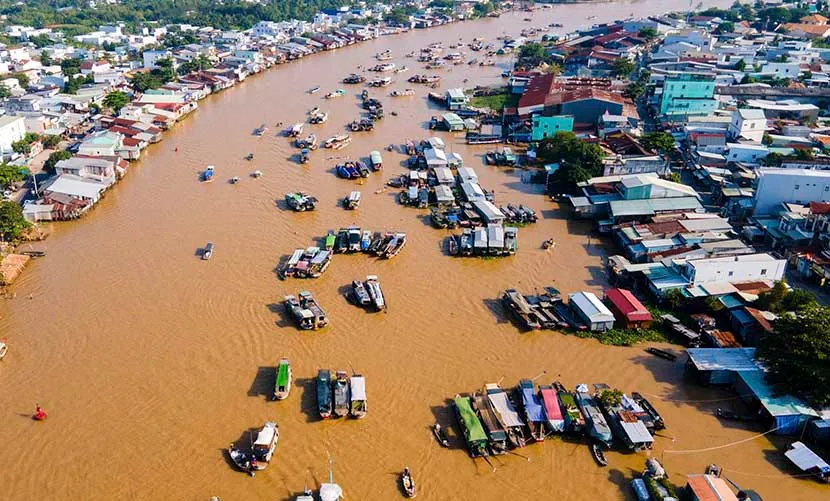
The wooden or steel boats gather together, loaded with fresh produce and goods right on the rivers. Vendors on boats wear traditional clothes and call out to attract customers. Hence, visitors can use small boats to move around between the big boats, shop for items, and have intimare conversations with local.
You'll find a variety of tropical fruits, vegetables, handicrafts, and jewelry available for purchase. Besides, food stalls on boats smell amazing with sizzling noodles and tasty broths, giving you a taste of Vietnam's yummy food.

Cai Rang Floating Market in Can Tho sits where three rivers meet (Cai Rang and Hau river branches). The water here is not too deep or shallow, making it easy for boats to stop and move around. It's also close to a shore market and a big fruit area.
In the past, Cai Rang mainly sold farm products, with each boat specializing in one type. But now, it mainly serve as a tourist attraction, where you can find a wider variety of foods, daily items, and things needed for river life.
Every day, the Cai Rang Floating Market usually starts at 5:30 a.m. and ends at 9:00 a.m. Buying and selling activities take place most actively for about two hours before the sun rises. So you should arrive early to watch the sunrise on the floating market and watch the bustling trading activities here.
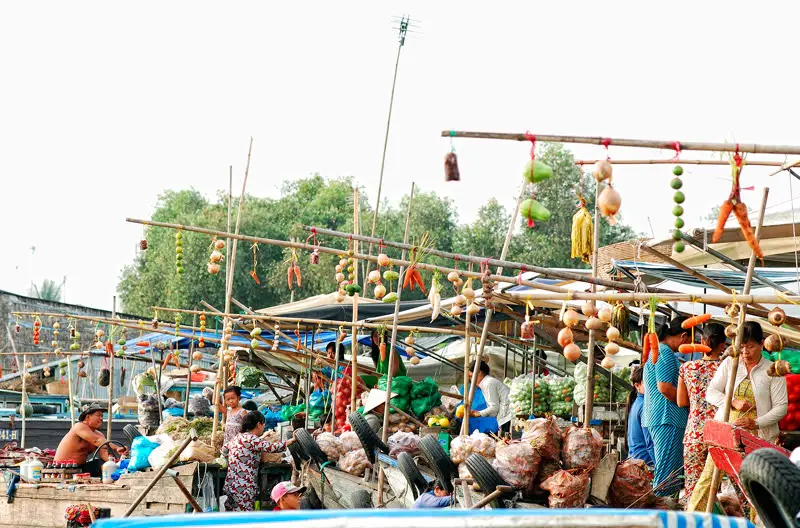
Apart from the general markets that sell a bit of everything, there are specialized markets dedicated to specific products. Let's continue exploring a few of these markets:
5. Flower market
Vietnam's flower markets are diverse from region to region, as a visual and aromatic delight, with a wide array of local and exotic blooms perfect for home decor or gifts. Flower markets cater to both wholesalers and retailers. With competitive prices for bulk purchases, they attract a lot of visitors from near and far.

Flower markets generally open quite early in the morning, even at night for wholesalers. The opening hours vary depending on the market. Below are some of Vietnam's flower markets with open hours.
- Quang Ba flower market in Hanoi: 11:00 PM to 6:00 AM
- Hoang Hoa Tham flower market in Hanoi: 5:00 AM to 05:00 PM
- Ho Thi Ki flower market in Ho Chi Minh: 5:00 AM to 11:00 PM
- Dam Sen flower market in Ho Chi Minh: Always open
6. Seafood market
Seafood markets in Vietnam are like bustling centers of activity where you can find all kinds of seafood. Sometimes they're set up in big ports like Cat Bi Seafood Market in Hai Phong, Long Bien Seafood Market in Hanoi, and Ben Thanh Seafood Market in Ho Chi Minh City. From these destinations, the wholesaler will collect the products and quickly distribute them to other provinces.
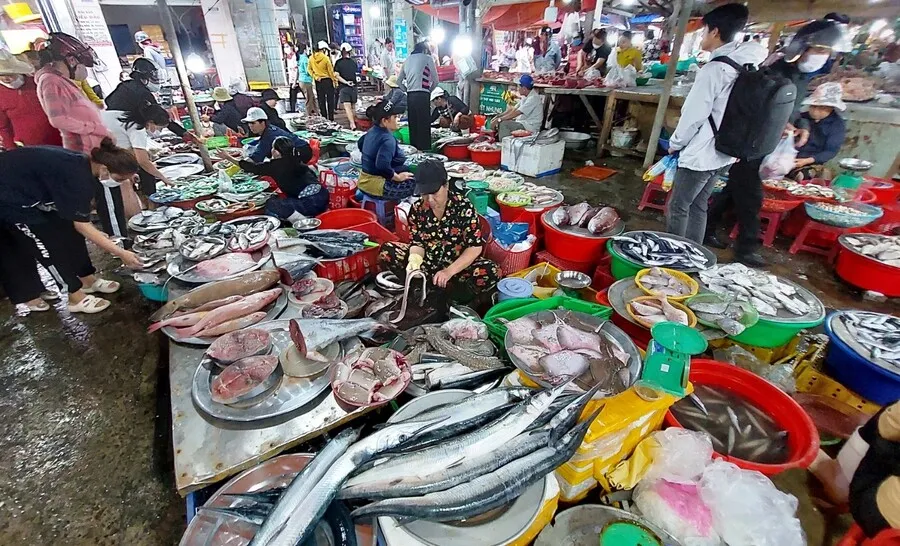
When visiting one of these markets, you'll feel the excitement of people buying and selling seafood. There's a strong smell of fresh fish and other sea creatures filling the air. You'll see lots of different types of fish, shrimp, scallops, and more being sold at different stalls. Some stalls nearby offer services of making fish into tasty dishes.
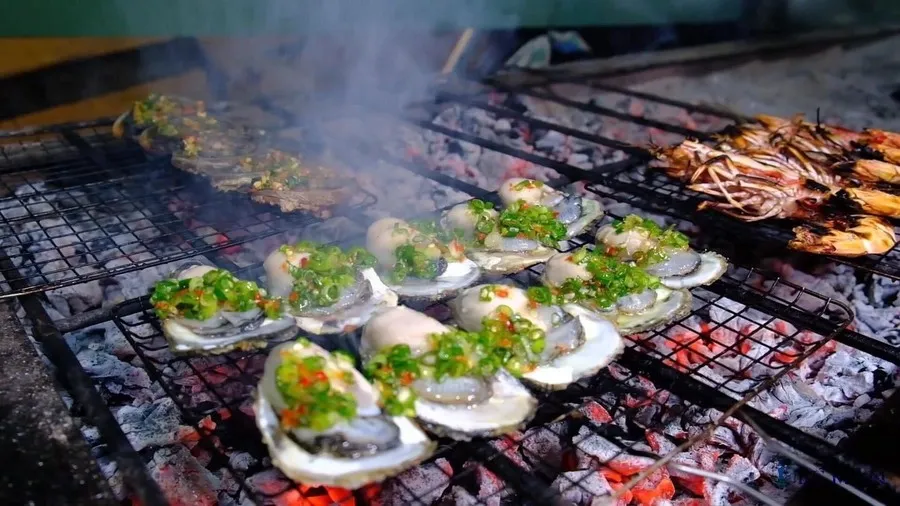
For a more authentic experience, visitors also can participate in fish markets in fishing villages such as Mui Ne Fishing Village Market, and Duong Dong Fish Market. Though the size is not as big as the fishing port, you always find the freshest fish and are warmly welcomed.
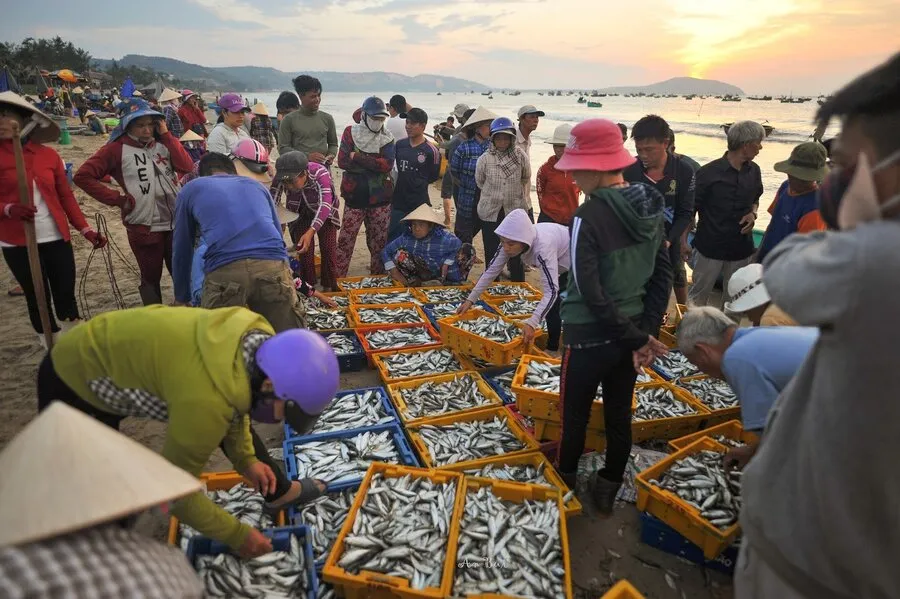
7. Fabric market
If you love clothes and fabrics, you'll be delighted by Vietnam's fabric markets full of colors, textures, and patterns. You can find all types of materials, from classic silk to modern cotton, to create your perfect outfit. In Ho Chi Minh City, Tan Dinh Market located in District 1 is the go-to choice, with many shops offering tailoring services and a huge variety of fabrics. It opens daily from 8 AM to 5 PM. In Hanoi, you can go straight ahead to Phung Khac Khoan fabric market to pick your fabric and get it tailored by someone who works in that shop.
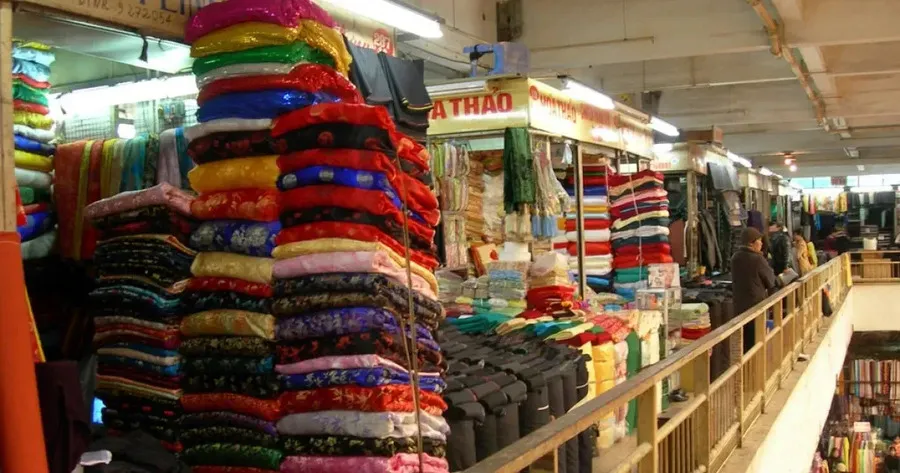
Above are the most popular types of Vietnamese markets, giving you an overview of daily life in Vietnam. Vietnamese markets go beyond shopping; they immerse you in the country's rich cultures, traditions, foods, and crafts. These markets let you experience the sights, sounds, smells, and lives that make up Vietnamese society. They are becoming popular spaces for tourists to connect, learn, explore, and be a part of the local community.
See more articles:
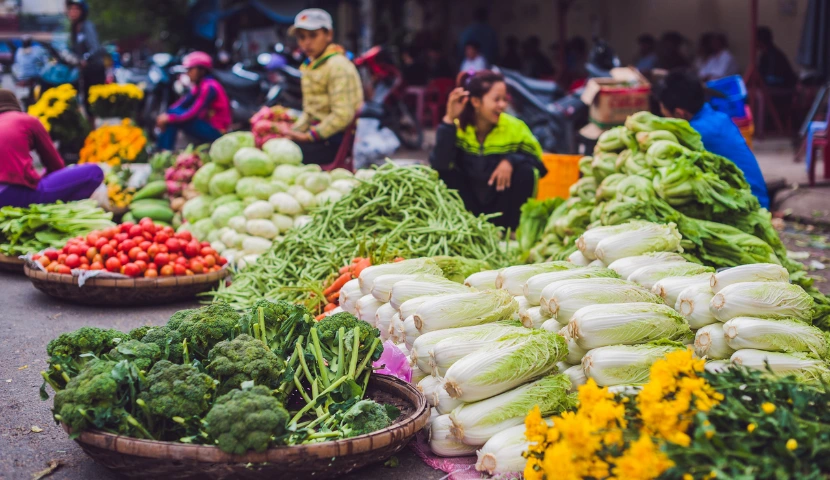







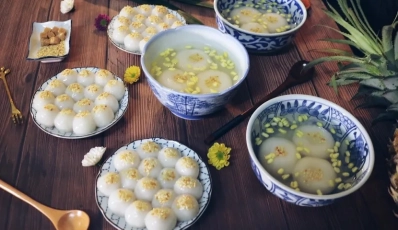


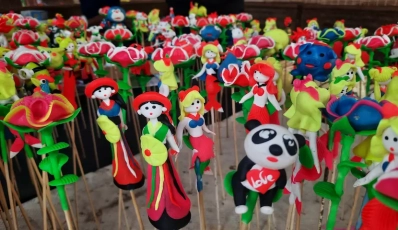

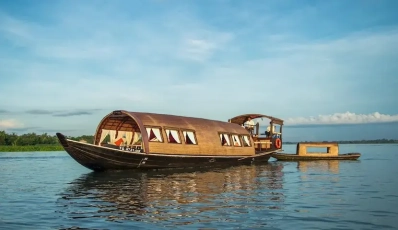
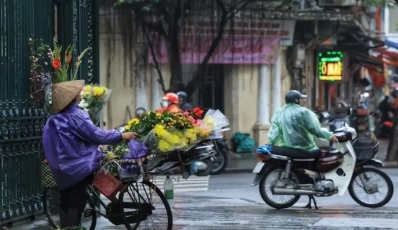






 TRAVELERS' CHOICE 2025
TRAVELERS' CHOICE 2025 


